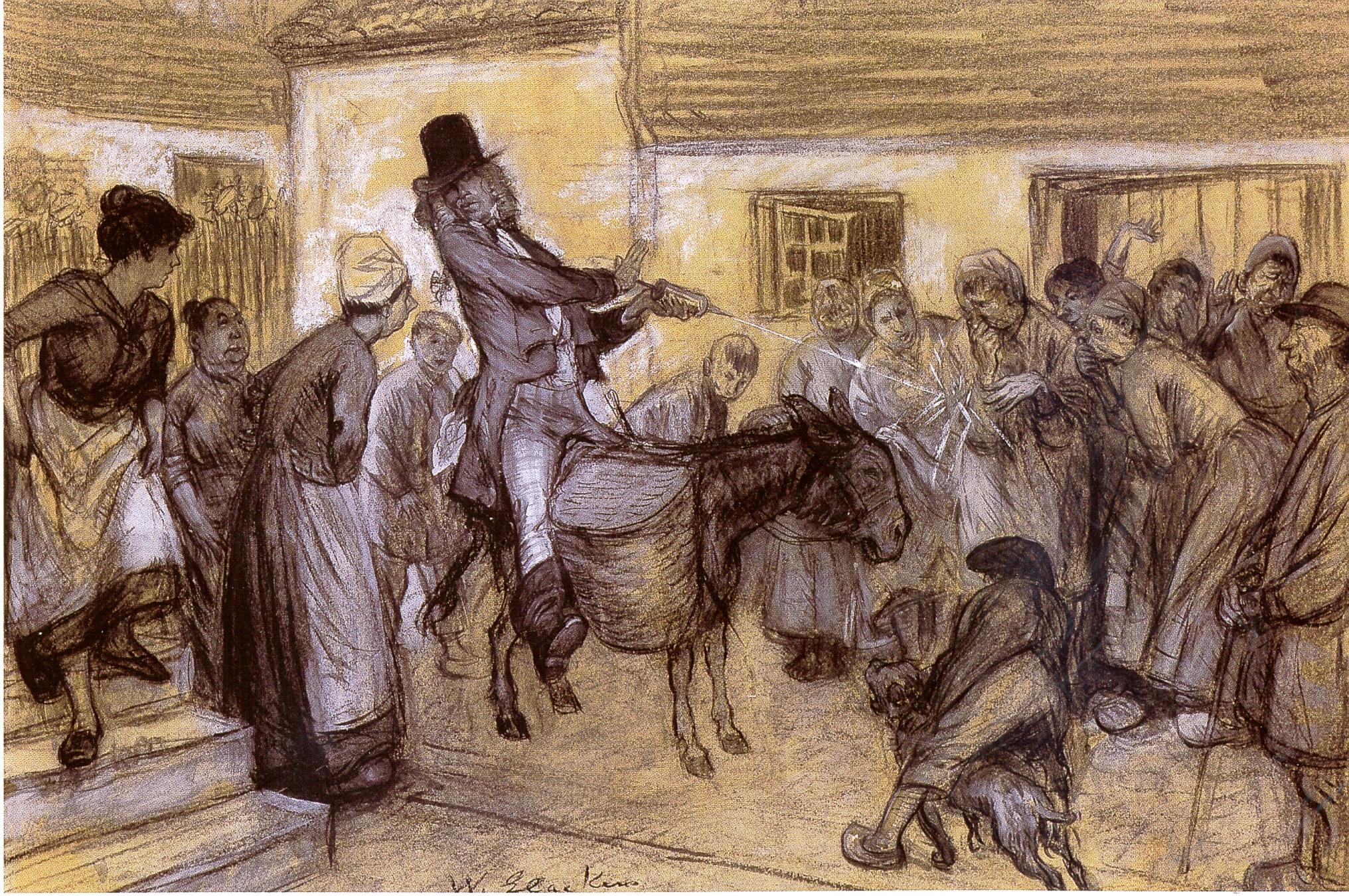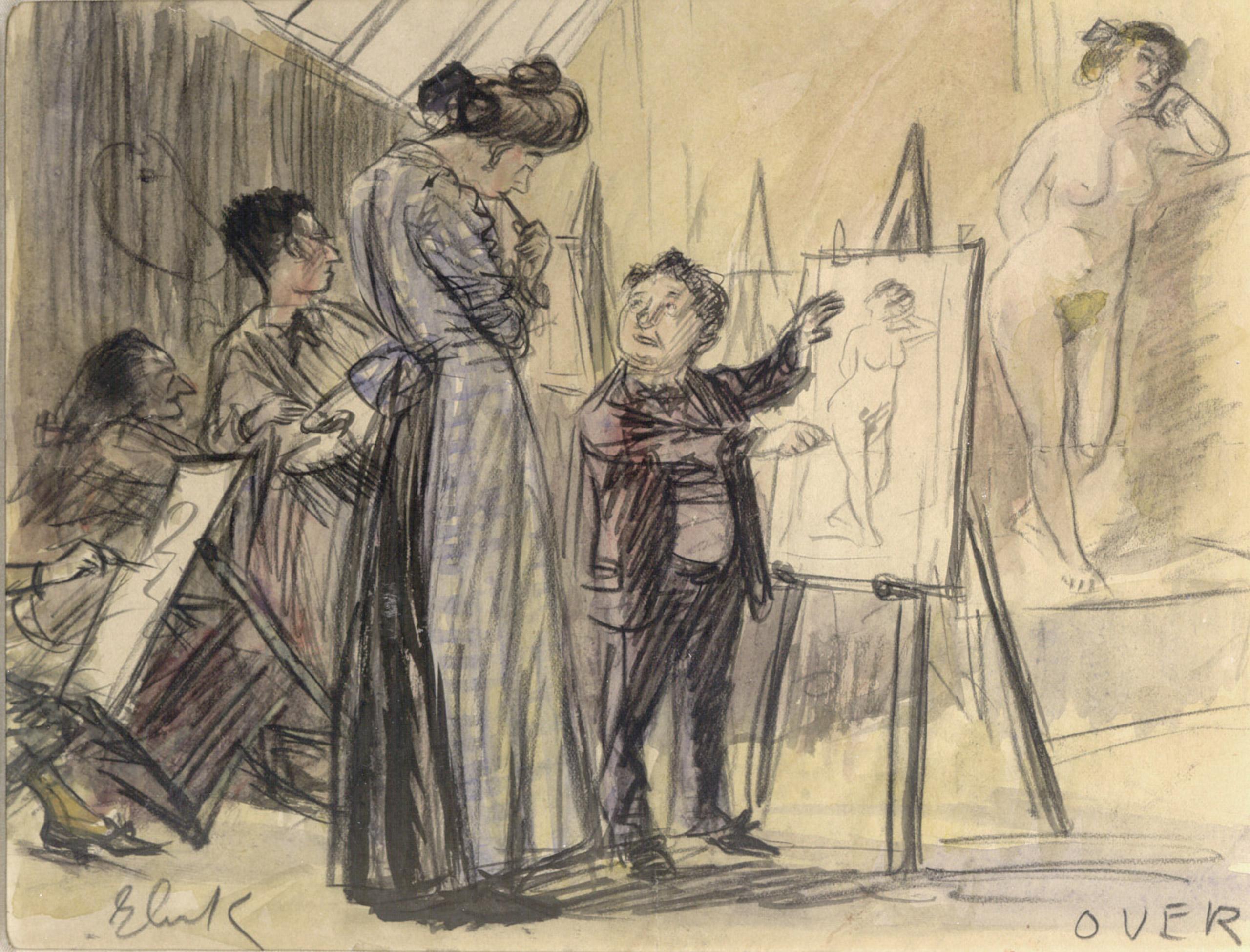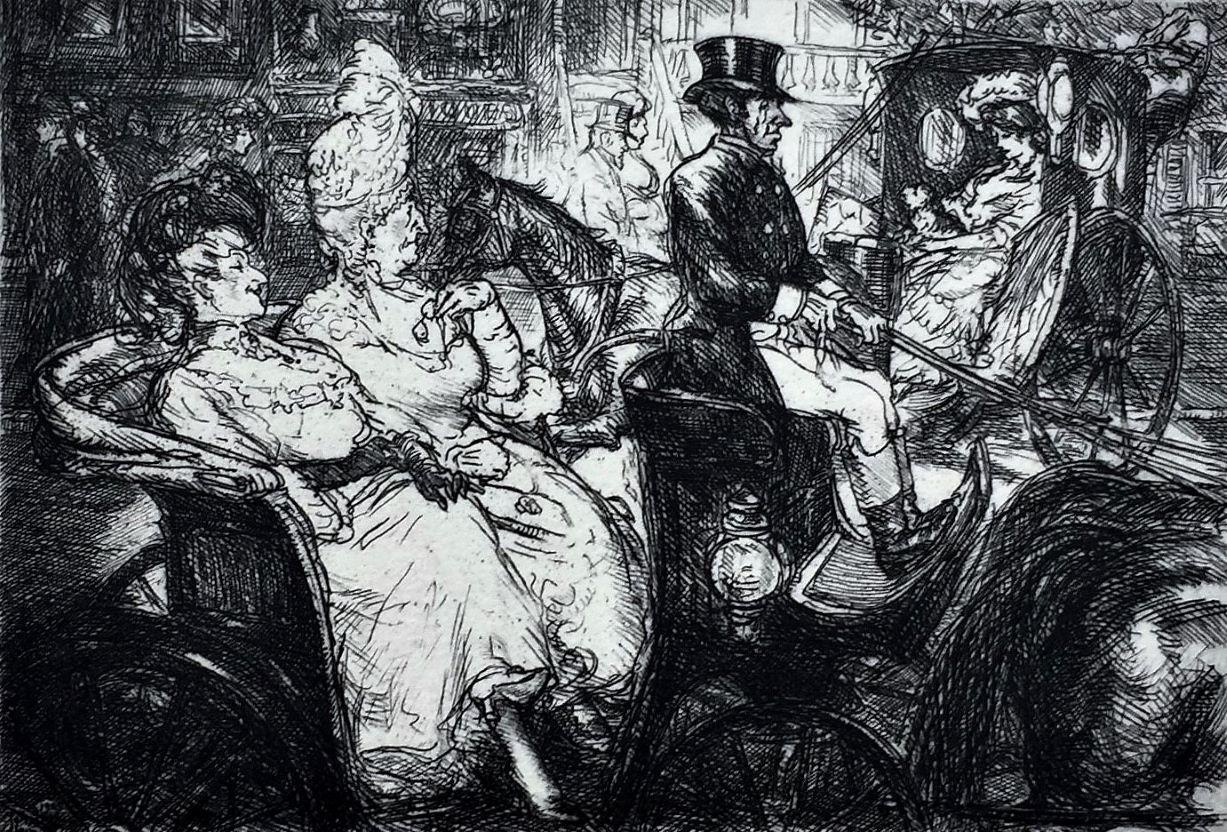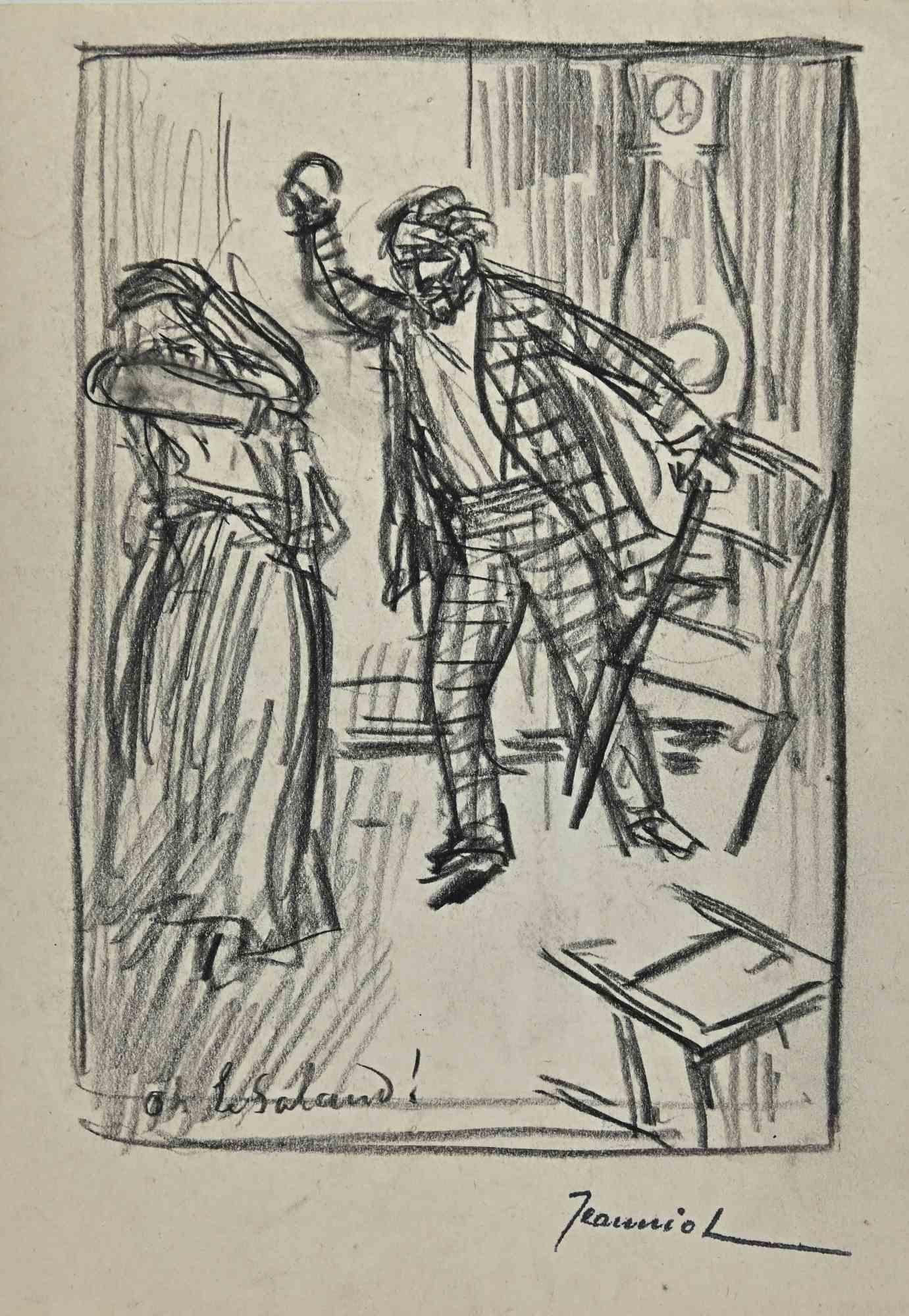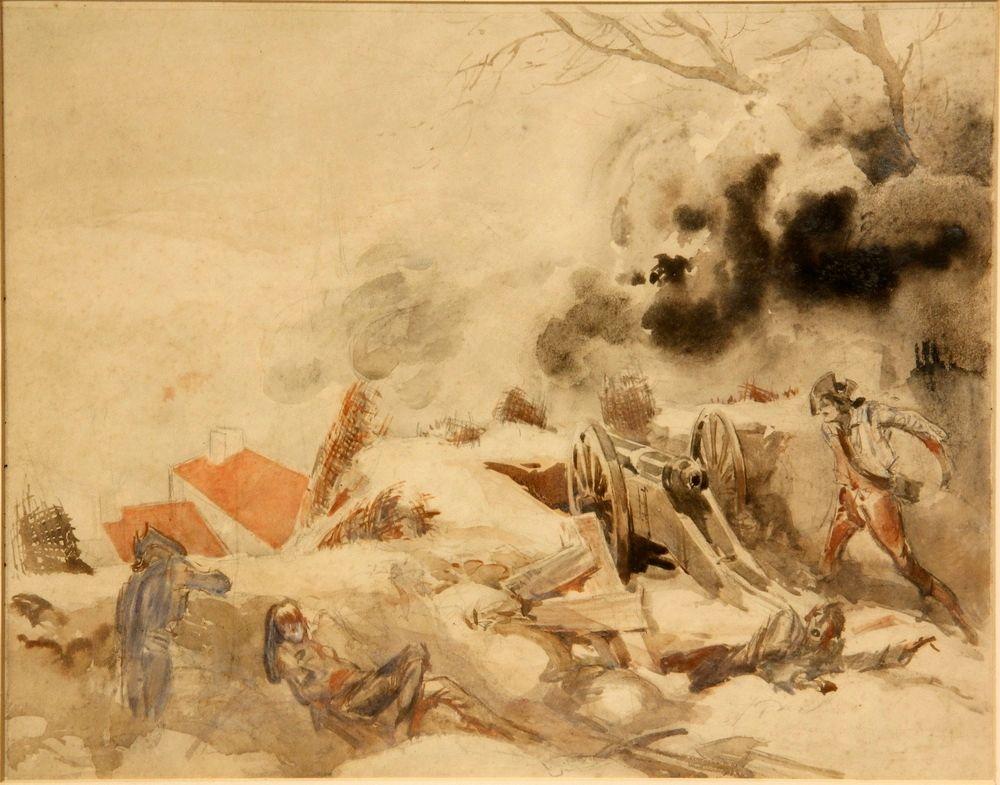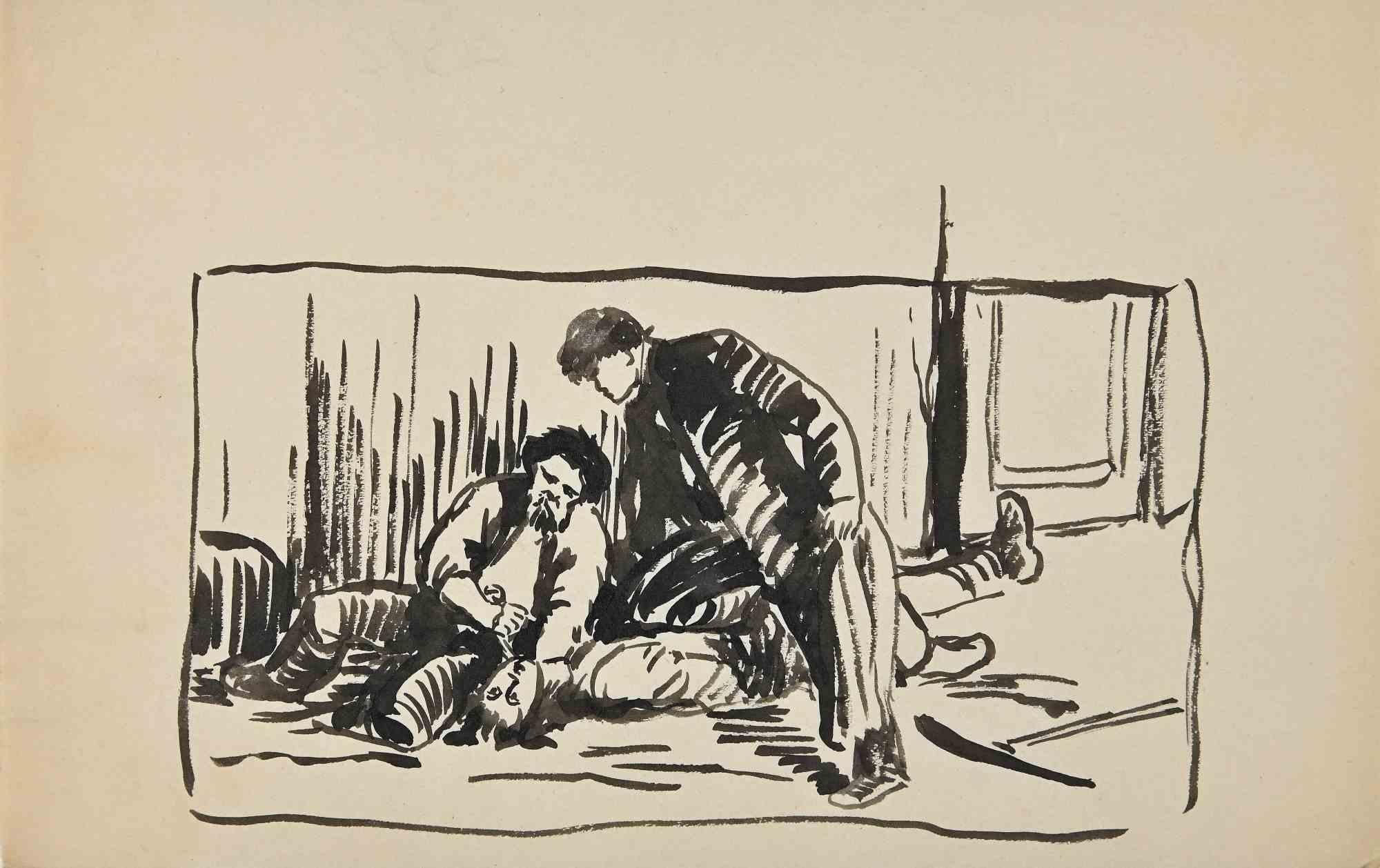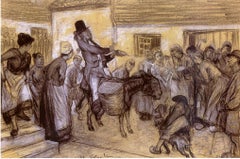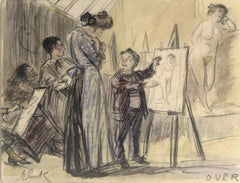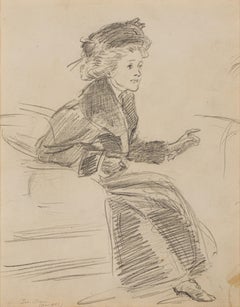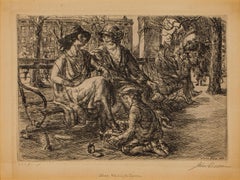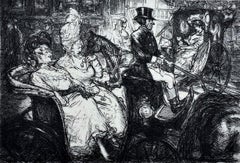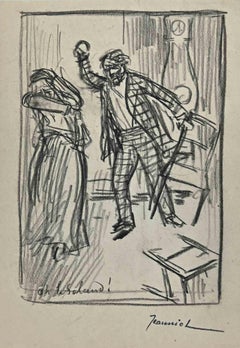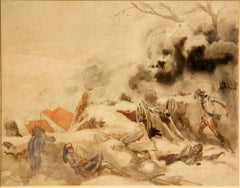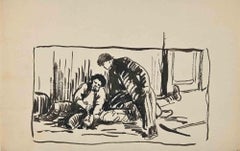Items Similar to William Glackens Drawing Titled "M. Durand... Arrived on the Scene", Dated 1903
Want more images or videos?
Request additional images or videos from the seller
1 of 5
William GlackensWilliam Glackens Drawing Titled "M. Durand... Arrived on the Scene", Dated 19031903
1903
$125,000
£95,487.68
€109,715.15
CA$178,723.13
A$196,911.26
CHF 101,933.19
MX$2,370,862.50
NOK 1,290,720.75
SEK 1,212,550.50
DKK 819,162
About the Item
William Glackens, 1870-1938
M. Durand... Arrived on the Scene, 1903
Ink, wash, charcoal and Chinese white on paper
Signed (at lower left): W. Glackens
Recorded:
Allyn, Nancy E. and Elizabeth H. Hawkes. William Glackens, A Catalogue of his Book
and Magazine Illustrations. Wilmington, Delaware: Delaware Art Museum, 1987, no.
1004.
This drawing was used as an illustration for de Kock, Charles Paul; St. Gervais, ed., Jean
Boston: Quinby, 1903, vol. 1, p. 113.
The drawing Monsieur Durand…Arrives on the Scene is one of the illustrations that the Glackens created for the first volume of C.P. de Kock’s novel Jean. The picture depicts a colorful tale of youthful mischievousness in middle-class Parisian life. In the story, Madame Durand decides that her son, the protagonist Jean, is destined to be an opera star; accordingly, she insists that he take music and dance lessons. An only child and somewhat spoiled, Jean vows to undermine his mother’s efforts, an undertaking which he successfully accomplishes one night at the weekly ball convened by his dancing-master, M. Mistigris, in his flat. While Mistigris is playing the prelude of the “Pantalon” and his company is dancing a quadrille of sixteen, Jean withdraws a fistful of fulminating peas from his pocket and throws them onto the dance floor. Even as the peas are still exploding and eliciting shrieks of fear from the ladies, Monsieur Durand suspects his son is the culprit and calls for the maid to stop Jean’s escape. The ensuing scene is represented in the drawing.
Unlike the images he produced for newspapers, which required from him firsthand observation, Glackens produced book illustrations from the story’s verbal clues, relying on his mastery of anatomical accuracy and keen awareness of distinctive personalities. M. Durand…Arrives on the Scene is a wonderful example of Glackens’ ability to discern and visually re-create eccentric temperaments. Rendered in the artist’s gritty, urban realist style, the picture is a witty, yet gentle caricature of both the lower and middle classes. The drawing focuses on a perplexed M. Durand who, brandishing a lit torch and waving his cane in the air, barges into the antechamber of the dancing-master’s apartment and encounters an unexpectedly frenetic scene. Shrouded in darkness, for Jean had previously blown out the candle, the characters that had one after another given chase to the young troublemaker are sprawled across the floor. M. Durand’s light reveals the cause of their dismay, two thick cords, unable to be detected in the darkness, had been strung across the room.
At the lower right, M. Mistigris fumbles on his back like a turtle trying to right itself, with his violin and bow still in hand. His right leg remains entangled with the cord, while his face expresses befuddled panic at the situation in which he finds himself. Immediately behind him, Madame Mouton, the most indefatigable of all the dancers and the obsequious mother of the three young ladies standing behind M. Durand, lies flat on
her stomach with her ample backside high in the air; her pale face conveys shock and humiliation. At the far left, the maid Nanette rests on her hands and knees with her mouth wide open, aghast at her compromising position on the floor. Glackens’ artistic style, characterized by swift, intuitive strokes, excellently captures the animated, unruly scene of Charles Paul de Kock’s story. In executing the drawing, the artist created an impressive range of tonalities by using ink, wash, charcoal and Chinese white. Delineating the scene with bold strokes of charcoal, the artist then endowed the figures with depth and shadows through his skillful use of ink wash and white color highlights. Ultimately, M. Durand…Arrives on the Scene exemplifies the artist’s keen talent for giving life to convincingly unique characters within a complex, multi-figure
composition.
- Creator:William Glackens (1870-1938, American)
- Creation Year:1903
- Dimensions:Height: 15.35 in (38.99 cm)Width: 10 in (25.4 cm)Depth: 1 in (2.54 cm)
- Medium:
- Period:
- Condition:
- Gallery Location:New York, NY
- Reference Number:1stDibs: LU2157211705852
About the Seller
No Reviews Yet
Vetted Professional Seller
Every seller passes strict standards for authenticity and reliability
1stDibs seller since 2022
- ShippingRetrieving quote...Shipping from: New York, NY
- Return Policy
Authenticity Guarantee
In the unlikely event there’s an issue with an item’s authenticity, contact us within 1 year for a full refund. DetailsMoney-Back Guarantee
If your item is not as described, is damaged in transit, or does not arrive, contact us within 7 days for a full refund. Details24-Hour Cancellation
You have a 24-hour grace period in which to reconsider your purchase, with no questions asked.Vetted Professional Sellers
Our world-class sellers must adhere to strict standards for service and quality, maintaining the integrity of our listings.Price-Match Guarantee
If you find that a seller listed the same item for a lower price elsewhere, we’ll match it.Trusted Global Delivery
Our best-in-class carrier network provides specialized shipping options worldwide, including custom delivery.More From This Seller
View AllWilliam Glackens Charcoal on Paper Drawing, Dated 1902
By William Glackens
Located in New York, NY
William Glackens, 1870-1938
Dubourg Drew from his Basket his Mechanical Syringe, 1902
Charcoal, gouache and white chalk on paper
Signed (at bottom cen...
Category
Early 1900s Figurative Drawings and Watercolors
Materials
Charcoal
William Glackens Watercolor on Paper, "Criticizing Ernest Lawson’s Art Class"
By William Glackens
Located in New York, NY
William Glackens, 1870-1938
Criticizing Ernest Lawson’s Art Class, ca. 1907
Watercolor and pencil on paper
Signed (at lower left): Glackens
Inscribed ...
Category
Early 1900s Figurative Drawings and Watercolors
Materials
Watercolor
Graphite on Paper Drawing by John Sloan Titled 'The New Hat', circa 1912
By John Sloan
Located in New York, NY
Sloan, John, 1871-1951
The New Hat, c. 1912
graphite on paper
12 X 10 inches
signed l.l. “John Sloan (per HFS)”
inscribed by Helen Farr Sloan.
Sloan-1
Provenance:
The artist,
Priva...
Category
1910s Figurative Drawings and Watercolors
Materials
Graphite
Etching on Paper by John Sloan Titled 'Shine, Washington Square', 1923
By John Sloan
Located in New York, NY
John Sloan, 1871-1951
Shine, Washington Square, 1923
Etching
5 X 7 inches
Sloan-5
Signed lower right: “John Sloan” and Titled by the artist lower center: “Shine, Washington Square”
Recorded:
Peter Morse. John Sloan’s Prints...
Category
1920s Figurative Drawings and Watercolors
Materials
Etching
Drawing on Paper of Water Nymphs by Everett Shinn
By Everett Shinn
Located in New York, NY
Everett Shinn, 1876-1953
Water Nymphs, n.d.
Pen and ink with gesso on paper
20 x 18 ½ inches
Signed (lower left)
Category
1930s Figurative Drawings and Watercolors
Materials
Ink
Watercolor Painting of the Monseigneur News Theatre, by Reginald Marsh, 1925
By Reginald Marsh
Located in New York, NY
Reginald Marsh, 1898 – 1954
Monseigneur News Theatre, 1925
Signed and dated at lower right: 'Reginald Marsh 1925'
Watercolor on card
8 x 11 inches
Born in Paris to parents who were American artists, Reginald Marsh became an adept illustrator at an early age. His family returned to the United States in 1900. Upon graduating from Yale University, Marsh moved to New York and in 1922 took a job as an illustrator at the New York Daily News. For the paper he provided cartoons of vaudeville and burlesque shows. In 1925 Marsh went to work for a new magazine -- The New Yorker -- as one of its original cartoonists. That same year he married Betty Burroughs, daughter of the paintings curator at the Metropolitan Museum of Art. Later that year they traveled to Europe where Marsh discovered the work of the old masters at the Louvre in Paris and British museums. With a sketchbook always on hand, he wandered the streets of Europe and began depicting bums or what he called figures of failure. Upon the couple’s return, Marsh, now with a serious interest in pursuing art, enrolled at the Art Students League where he studied under George Luks, John Sloan, and Kenneth Hayes Miller. This work, Monseigneur News Theatre, is accompanied by a letter from Marsh Scholar Professor Norman Sasowsky, University of Delaware...
Category
1920s Figurative Drawings and Watercolors
Materials
Watercolor
You May Also Like
Fifth Avenue Critics.
By John French Sloan
Located in Storrs, CT
Fifth Avenue Critics. 1909. Etching. Morse 128.x/xi. 6 x 8 (sheet 9 3/4 x 12 1/4). Edition 100 in this state (few proofs in earlier states, and a large unsigned edition printed for t...
Category
Early 1900s American Modern Figurative Prints
Materials
Etching
$2,400 Sale Price
20% Off
Sketch - Charcoal Drawing By Pierre Georges Jeanniot - Early 20th Century
By Pierre Georges Jeanniot
Located in Roma, IT
Sketch is an original Drawing on paper realized by the painter Pierre Georges Jeanniot (1848-1934).
Drawing in charcoal.
Hand-signed on the lower.
Good conditions except for aged ...
Category
Early 20th Century Modern Figurative Drawings and Watercolors
Materials
Charcoal
Attributed to; Design for the Battle of Brooklyn Heights Scene in 1924 Film
By Everett Shinn
Located in Fort Washington, PA
Medium: Watercolor and Graphite on Illustration Board
Signature: Unsigned, Christies Stamp Verso.
In silver molded frame, french-lined mat, glazed. OS: 18 1/2" x 22", SS: 11" x 15". Shinn took over from Joseph Urban as the Art Director on the William Randolph Hearst's Cosmopolitan Pictures film, shot in New York City and Tarrytown, NY. Directed by E. Mason Hopper, starring Marion Davies...
Category
20th Century Landscape Drawings and Watercolors
Materials
Watercolor, Illustration Board, Graphite
The Murder - Drawing - Early 20th Century
Located in Roma, IT
The Murder is an original Drawing in China ink on cream-colored paper realized by An anonymous artist in the early 20th century.
Good conditions.
the artwork is represented throug...
Category
Early 20th Century Modern Figurative Drawings and Watercolors
Materials
Ink
"Man Monkey, " Original Etching Genre Scene signed by John Sloan
By John Sloan
Located in Milwaukee, WI
"Man Monkey" is an original etching by John Sloan. The artist signed the piece in the lower right. This is from an edition of 100. It depicts a man banging a drum in the middle of a ...
Category
Early 1900s Ashcan School Figurative Prints
Materials
Etching
Early 20th Century Social Realism Etching by John Sloan -- Bandits Cave
By John French Sloan
Located in Soquel, CA
1920 Social Realism Etching by John French Sloan titled "Bandits Cave"
Compelling etching by John Sloan (American 1871 - 1951), 1920 during first year of prohibition showing a estab...
Category
1920s Ashcan School Figurative Prints
Materials
Laid Paper, Etching
More Ways To Browse
Antique Swift
Dance Floor Used
Antique Stomacher
Orientalist Drawing
Paris Ink Drawings
Pencil 18th
1919 Charcoal
1970s Pen Drawings
Vintage Car Drawing
Original Charcoal Drawings Framed
20th Century Charcoal Sketch
Richard Knotel
Andre Roland Brudieux
Herbert Knotel
Shoe Drawing
Nude China Ink Drawings
Vintage Black And White Sketches
Female Studio Nude
